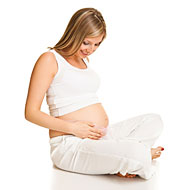- General Articles
- General Pregnancy Questions
- Baby Growth
- Pregnancy Diet
- Miscarriage
- During Pregnancy
- Twin Pregnancy
- Toddler Meals
- Home Remedies During Pregnancy
- Breastfeeding
- Pregnancy Week By Week
- Pregnancy Tests
- Ectopic Pregnancy
- Pregnancy Signs and Symptoms
- Pregnancy Stages
- Potty Training
- Fetal Development
- Preschooler
- Postpartum Depression
- Toddler Illness
- Baby Care
- After Pregnancy
- Molar Pregnancy
- During Delivery
- Beauty and Style
- Pregnancy Clothing
- Preconception
- Fertility
Taking Care Of After Birth Stitches
Almost 90 percent of all mothers have tears while giving birth but most of them are usually very minor and don’t require stitches. Mostly stitches are needed when a small incision has been made to the perineum to assist the baby in coming out of the uterus; this procedure is known as an episiotomy. Eight out of ten women have to have episiotomies, especially when birthing requires the help of forceps or ventouse.
There is sometimes bruising that appears in addition to a cut or a tear which is mostly caused due to the pressure of your baby’s head through the birth canal. Episiotomy or tears can also be reason for bruising.
The tears in the perineum are categorized into five degrees, the first degree usually heals on its own and does not need stitches, second degree tears usually requires stitches while fourth to fifth degree stitches always require stitches.
It is important to take care of your stitches to avoid an infection in the wound. For four or five degree tears, your obstetrician will advise a five-day course of antibiotics to protect you from infections as well as prescribe laxatives so that going to the toilet becomes easier without having to put strain on the stitches. Here are a few things you can do to take care of your stitches after pregnancy:
- Ensure you change your sanitary pad at regular intervals, washing your hand before and after doing so.
- Take a bath or shower a minimum of once a day.
- Expose your stitches to the air. Place an old towel underneath you, rest on your bed for 10 minutes with your panties once or twice a day.
- Make sure you drink lots of water and eat high-fibre rich diet to avoid getting constipated. Applying strain to the stitching area can cause them to come off.
- Pelvic floor exercises are a good way to promote healing and to help avoid leaking or dripping from the bladder or bowels.
5 Ways to Soothe Postpartum Stitches
Sometimes stitches can tend to be quite bothersome during the healing process. Here are some ways to soothe the uncomfortable after-effects of postpartum stitches:
- Cool packs and warm water – Cool packs of frozen peas, crushed ice or ice gel packs can be quite comforting on the perineum to help with the soreness. Make sure you wrap the cool pack in damp clean cloth to make it feel a bit better and to protect the delicate skin in that area. Pour a warm jug of warm water over the area when you pee, this will help dilute the urine and decrease the sting
- Warm bath – Put a few drops of tea-tree or lavender oil in your bath. This can help comfort and soothe the area. After your bath, dab the area with a dry and clean towel. You can also use witch-hazel by dabbing a little onto the stitches with some cotton wool or applying a witch-hazel compress
- Take rest – Although being active is good for your circulation however sometimes you may have a dragging heavy feeling in the perineum area, so take some rest for an hour or so
- Painkillers – If you feel pain in the area, try taking painkillers such as ibrufen or paracetamol to reduce the ache. Breastfeeding can be done on these painkillers however it always best to consult with your doctor before you opt for any sort of medication for pain or otherwise
- Valley cushion or Rubber rings – In some cases, sitting down may be uncomfortable, for this you can use a rubber ring of a valley cushion to ease some of the distress you feel in the area
Be sure to consult your doctor if your stitches are very painful or become smelly, if you are unable to control your bowels when passing gas, and or have to rush to the toilet when you feel your bowels move.
Read more articles from the After Pregnancy Category.



 7 Must-Haves Before Your Baby Arrives
7 Must-Haves Before Your Baby Arrives Bonding Games for Babies
Bonding Games for Babies DIY Baby Bath Towel Apron
DIY Baby Bath Towel Apron Common Late Pregnancy Fears
Common Late Pregnancy Fears